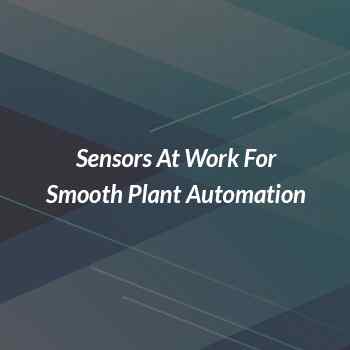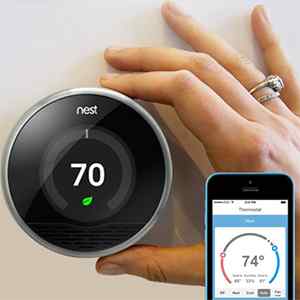Industrial IoT: Connecting the Dots in Manufacturing

Introduction:
In the fast-paced world of industry, manufacturers are increasingly adopting advanced technologies to streamline their operations and maintain their competitive edge. Among these innovations, the Industrial Internet of Things (IIoT) stands out as a transformative force reshaping the manufacturing landscape. This article takes an in-depth look at IIoT, its profound impact on the manufacturing sector, and the myriad advantages it offers.
What is Industrial IoT (IIoT)?
Industrial IoT, often referred to as IIoT, is a specialized branch of the broader Internet of Things (IoT) designed for industrial settings. It involves connecting various devices, machines, and systems within a manufacturing environment to the Internet. These connected devices can communicate, collect data, and share information in real-time, enabling smarter decision-making and more efficient operations.
The IIoT ecosystem comprises a diverse range of components, including sensors, actuators, connectivity hardware, software platforms, and data analytics tools. These elements work together to enable seamless communication between machines, people, and systems, fostering a connected and intelligent manufacturing environment.
Connecting the Dots: IIoT in Manufacturing
1. Data-Driven Insights
One of the primary advantages of implementing IIoT in manufacturing is the ability to gather vast amounts of data from equipment and processes. Sensors, cameras, and other IoT devices can monitor everything from machine performance to environmental conditions. This data is then analyzed to identify patterns, inefficiencies, and opportunities for improvement.
Manufacturers can utilize advanced data analytics techniques, such as machine learning and artificial intelligence, to make sense of the collected data. Predictive analytics, for instance, can forecast machine failures before they occur, allowing for timely maintenance and reducing unplanned downtime.
Moreover, historical data analysis can provide valuable insights into long-term trends, helping manufacturers make informed decisions about process optimization, resource allocation, and capacity planning. It's not just data; it's actionable intelligence that drives continuous improvement.
2. Predictive Maintenance
IIoT allows manufacturers to move away from reactive maintenance practices and adopt a proactive approach. By continuously monitoring equipment health, anomalies can be detected early, preventing costly breakdowns and minimizing downtime.
Predictive maintenance leverages real-time data from sensors and predictive algorithms to predict when equipment is likely to fail. This information is invaluable as it enables manufacturers to schedule maintenance activities during planned downtime, avoiding the disruptive and costly impact of unscheduled breakdowns.
The benefits are multifold: increased equipment lifespan, improved production uptime, reduced maintenance costs, and enhanced overall operational efficiency. In essence, IIoT empowers manufacturers to keep their production lines running smoothly and their bottom lines healthy.
3. Enhanced Efficiency
Efficiency is a key goal in manufacturing, and IIoT plays a crucial role in achieving it. Real-time data analysis helps identify bottlenecks and streamline production processes. It enables manufacturers to adjust parameters, optimize workflows, and improve resource allocation, ultimately leading to increased productivity.
With IIoT, manufacturers gain a granular understanding of their production processes. They can monitor each machine's performance, track the flow of materials, and analyze production cycle times. Armed with this data, they can fine-tune their operations for maximum efficiency.
Machine-to-machine communication is another significant efficiency booster enabled by IIoT. Devices on the factory floor can communicate with each other to coordinate tasks and minimize idle time. For example, a machine can signal to a robotic arm when it's ready to receive a part, ensuring seamless integration within the production line.
4. Quality Control
Maintaining product quality is essential in manufacturing, and IIoT helps in achieving consistent quality standards. Sensors can monitor product specifications and detect any deviations from the desired parameters. Automated alerts and adjustments ensure that products meet the required quality criteria.
Quality control is not limited to the end product; it extends throughout the entire manufacturing process. IIoT allows for real-time monitoring of critical parameters, such as temperature, pressure, and humidity, ensuring that products are manufactured within the desired tolerances.
Furthermore, the data collected during the production process can be archived and used for traceability purposes. In the event of a product recall or quality issue, manufacturers can quickly identify affected batches and take appropriate corrective actions, thus safeguarding their reputation and minimizing potential liabilities.
5. Supply Chain Optimization
IIoT extends beyond the factory floor and into the entire supply chain. It enables better visibility into the movement of materials and products, reducing lead times, minimizing inventory costs, and enhancing logistics.
Manufacturers can make data-driven decisions to optimize their supply chain processes. For instance, real-time tracking of inventory levels can trigger automatic reordering of raw materials when they reach a specified threshold, ensuring that production never grinds to a halt due to material shortages.
The transparency provided by IIoT also enhances collaboration with suppliers and logistics partners. Shared access to supply chain data enables smoother coordination, leading to improved delivery schedules and reduced shipping costs.
6. Sustainability
The issue of sustainability has become increasingly prominent in our contemporary world. The adoption of IIoT by manufacturers can serve as a valuable tool for tracking energy usage, emissions, and resource utilization. By pinpointing areas where resources are squandered, businesses can proactively implement measures to diminish their environmental impact. This approach not only demonstrates social responsibility but also proves to be economically advantageous.
For example, smart energy management systems can analyze energy consumption patterns and optimize power usage during non-peak hours. Additionally, IIoT can facilitate the integration of renewable energy sources, such as solar panels and wind turbines, into manufacturing facilities, further reducing environmental impact.
Another vital facet of sustainability revolves around waste reduction. Utilizing IIoT sensors, manufacturers can closely monitor waste generation and oversee recycling initiatives. This proactive approach enables companies to diminish their environmental impact and adhere to sustainability regulations effectively.
Conclusion
In summary, as we contemplate the future landscape of IIoT in manufacturing, it is crucial to acknowledge the potential opportunities as well as the hurdles that must be navigated. While the advantages of implementing IIoT in manufacturing are indeed substantial, it is equally vital to confront and address the associated challenges and complexities. These challenges encompass issues related to security, concerns regarding data privacy, and the fundamental necessity of having a robust and dependable network infrastructure. Successfully overcoming these challenges will be pivotal for manufacturers seeking to fully harness the transformative power of IIoT.
However, the rewards far outweigh the challenges. Manufacturers that successfully embrace IIoT can expect increased competitiveness, improved operational efficiency, reduced costs, and enhanced product quality. Moreover, they will be better positioned to adapt to changing market dynamics and customer demands.







